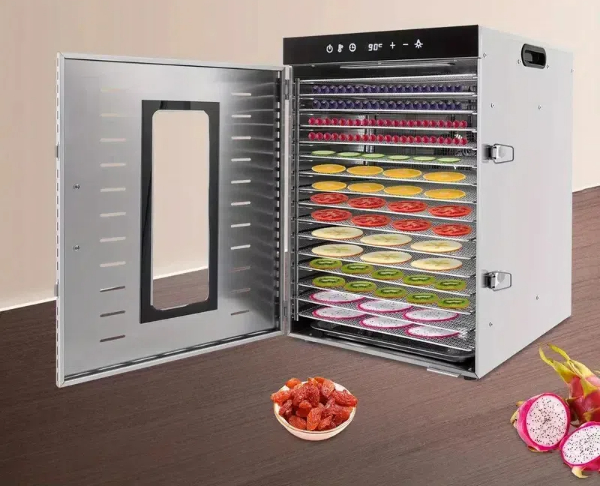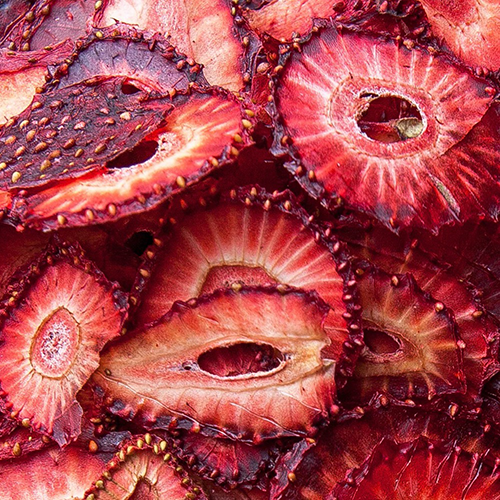Introduction
In the world of food processing, hang type dryers play a crucial role in preserving food quality and extending shelf life. This article will guide you through the installation process of a hang type dryer, focusing on essential considerations, steps, and best practices for optimal performance. Whether you're a manufacturer, wholesaler, or brand owner, understanding how to properly install and utilize these machines is vital for ensuring efficiency and effectiveness.

Understanding Hang Type Dryers
Hang type dryers are designed to dry food products by suspending them in a controlled environment where hot air circulates. This method is particularly effective for drying fruits, vegetables, herbs, and meats. The benefits include:
1. Uniform drying: Ensures all surfaces of the food item are exposed to heat.
2. Energy efficiency: Reduces energy consumption compared to traditional dryers.
3. Quality preservation: Maintains nutritional value and flavor.
Components of a Hang Type Dryer
Before diving into the installation process, it's essential to familiarize yourself with the main components of a hang type dryer:
1. Drying chamber: The enclosed space where food is dried.
2. Heating element: Provides the necessary heat for drying.
3. Air circulation system: Ensures even distribution of hot air.
4. Control panel: Allows users to set temperature and drying time.
5. Hanging racks or hooks: Designed to hold food items securely during the drying process.
Types of Hang Type Dryers
There are various types of hang type dryers available in the market, each suited for different applications:
1. Electric Hang Type Dryers: These dryers use electric heating elements to generate heat, making them ideal for indoor use.
2. Gas-Powered Hang Type Dryers: These models utilize gas burners for heating and are often used in larger operations where electricity costs are a concern.
3. Solar Hang Type Dryers: Utilizing solar energy, these dryers are environmentally friendly and cost-effective but depend on weather conditions.

Installation Steps
1. Preparing the Installation Site
Before installing the hang type dryer, ensure that the installation site meets the following criteria:
- Adequate space: The area should allow for proper airflow around the dryer. A minimum clearance of 2 feet around all sides is recommended.
- Stable surface: Ensure that the floor can support the weight of the dryer and any food products. Concrete or reinforced flooring is ideal.
- Electrical supply: Check that there is a suitable power source available. For gas models, ensure proper gas line access.
2. Mounting the Dryer
Mounting a hang type dryer involves several steps:
- Select the location: Choose a wall or ceiling that can support the dryer's weight. Avoid areas with excessive moisture or direct sunlight.
- Mark bracket positions: Use a level to ensure brackets will be installed evenly. Measure twice to avoid mistakes.
- Drill holes: Create holes based on your bracket specifications using an appropriate drill bit for your wall material (e.g., masonry or wood).
- Attach brackets securely: Use appropriate screws and anchors to ensure stability. It’s advisable to use stainless steel hardware to prevent rusting.
3. Connecting Electrical Components
Once mounted, connect the electrical components:
- Power supply connection: Ensure all connections are secure and comply with local electrical codes. Use a qualified electrician if necessary.
- Control panel setup: Follow manufacturer instructions to configure settings such as temperature ranges and timer functions.
4. Testing the System
After installation, conduct tests to ensure everything operates correctly:
- Check airflow: Ensure air circulates freely within the drying chamber by observing airflow indicators or using smoke tests.
- Temperature settings: Test different temperature settings to find optimal drying conditions based on your specific food items.
5. Final Checks Before Use
Before putting your hang type dryer into operation:
- Inspect all connections for leaks (for gas models).
- Ensure that all safety features are functioning correctly.
- Verify that there are no obstructions in the drying chamber.
Best Practices for Using Hang Type Dryers
To maximize efficiency and prolong the life of your hang type dryer, consider these best practices:
1. Regular maintenance: Clean filters and check heating elements frequently. Schedule maintenance checks every few months to ensure longevity.
2. Monitor humidity levels: Use hygrometers to ensure optimal drying conditions; aim for humidity levels below 20% during operation.
3. Load management: Avoid overloading the dryer to maintain airflow; follow manufacturer guidelines on maximum load capacity.
4. Pre-treatment of food items: Consider blanching vegetables or marinating meats before drying to enhance flavor and preserve color.
5. Use appropriate hanging methods: Ensure that food items are hung securely without touching each other to allow for even airflow.
Troubleshooting Common Issues
Even with proper installation and maintenance, issues may arise during operation. Here are some common problems and their solutions:
1. Uneven Drying
Problem: Some items dry faster than others.
Solution: Adjust loading patterns by ensuring adequate space between items for airflow; consider rotating items halfway through the drying cycle.
2. Excessive Energy Consumption
Problem: The dryer uses more energy than expected.
Solution: Check for air leaks in the drying chamber; ensure that all seals are intact and that no gaps allow hot air to escape.
3. Odor Transfer Between Batches
Problem: Previous batches leave lingering odors on new items.
Solution: Clean the drying chamber thoroughly after each use; consider using odor-neutralizing agents if necessary.
Conclusion
Installing a hang type dryer requires careful planning and execution. By following these guidelines, you can ensure a successful installation that enhances your food processing capabilities while maximizing efficiency and product quality. Proper maintenance and monitoring will further help in achieving consistent results over time.

FAQ
1. What types of foods can be dried using a hang type dryer?
Hang type dryers are suitable for various foods including fruits, vegetables, herbs, meats, fish, and even flowers.
2. How do I determine the right temperature for drying?
The ideal temperature varies by food type; consult specific drying guidelines for each product or refer to manufacturer recommendations.
3. Can I use my hang type dryer outdoors?
It is recommended to install hang type dryers indoors where temperature and humidity can be controlled effectively; however, some models may be suitable for sheltered outdoor use under certain conditions.
4. How often should I clean my hang type dryer?
Regular cleaning is advised after every batch or at least once a week to maintain efficiency; deep cleaning should be performed monthly.
5. What should I do if my dryer isn't working properly?
Check power connections, ensure proper loading configurations, clean filters, and consult the user manual for troubleshooting steps specific to your model.
Citations:
[1] https://www.fisherpaykel.com/download/user-guide/Laundry/Dry/Dryers/427782b-nz-au-sg-front-loading-dryer-guide.pdf
[2] https://patents.google.com/patent/WO2017197612A1/zh
[3] https://docs.rs-online.com/9ca6/0900766b81535d03.pdf
[4] https://patents.google.com/patent/WO2022068971A1/zh
[5] https://www.youtube.com/watch?v=JQ_hv5TYr7U
[6] https://www.electrolux-ui.com/DocumentDownLoad.aspx?DocURL=2011%5C136%5C918250umEN.pdf
[7] https://www.electrolux.co.nz/documenthandler.ashx?file=aHR0cHM6Ly9yZXNvdXJjZS5lbGVjdHJvbHV4LmNvbS5hdS9QdWJsaWMvRmlsZS8_SWQ9MjYyODQ1
[8] https://patents.google.com/patent/CN1405396A/zh
[9] https://www.coastappliances.ca/blogs/learn/dryer-installation-guide











